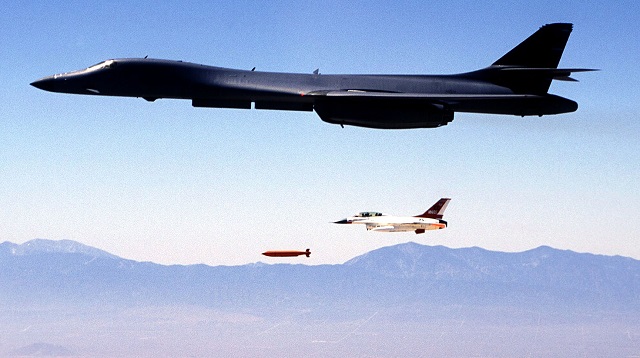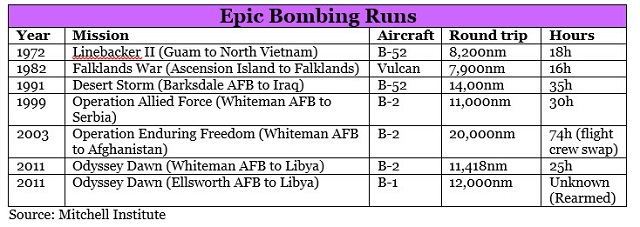Russia and China’s pursuit of modern, long-range bombers is essentially an endorsement of the US Long-Range Strike Bomber, and not the start of some Cold War-era bomber race. That’s the view of retired US Air Force Lt Gen David Deptula, now dean of the Air Force Association’s Mitchell Institute.
In an interview with reporters this week ahead of his “Beyond the Bomber” report launch in September, Deptula said LRS-B should be viewed as a national asset and budget priority, because the air force’s “capable but eroding” inventory of nuclear-capable bombers is aging out.
“I wouldn’t characterise it as a bomber race, but their interest in those kinds of capabilities underlies the significance and value of that kind of a capability for nations who want to compete with us as a superpower,” he says. “By virtue of the fact they’re trying to procure those aircraft, they make my point.”

His comments are in reference to Russia’s planned revival of Tupolev Tu-160 “Blackjack” production and the simultaneous development of the PAK DA next-generation strategic bomber, as well as China’s long-running pursuit of a Xian H-6K replacement.
Deptula points out that 87% of the current US bomber force are not designed for stealth, and the youngest aircraft, a Northrop Grumman B-2, arrived in 1997.
He says bombers can drop many times more guided bombs per sortie than fighters owing to their size and range, making them a strategic national asset. The Boeing B-1B and B-2A, for instance, are equipped to carry more than 80 227kg (500lb) bombs each, whereas fighter aircraft carry fewer than 10.

US Air Force
His comments, and report, come as the USAF prepares to award a contract for its highly classified Long-Range Strike Bomber (LRS-B) programme to either Northrop Grumman or Boeing, and as Pentagon officials warn of a possibly insurmountable military spending hump in the mid-2020s, just when production of 80 to 100 bombers is due to ramp up.
Deptula says he worries the looming spending crunch might have forced the LRS-B competition into a “cost shootout, as opposed to a capability shootout”.
He says numbers matter, and the bomber shouldn’t be gold-plated. But, investment now in “expansion and adaptability” would make the introduction of new capabilities like directed energy weapons easier down the road.
“We shouldn’t be dictating capability with a per-unit cost number,” he says.

The air force says its cost target is $570 million per bomber (in 2015 dollars), and analysts say the total acquisition including development could be worth as much as $80 billion.
How the air force intends to squeeze that giant sum into its spending plans remains to be seen, since production of the F-35, KC-46, T-X and JSTARS replacement peaks around the same time.
The Pentagon reported last year that it expects to spend $33 billion on LRS-B over the coming decade. An additional $24 billion will be spent improving the B-2 and B-52 in the same period.
“The long-range sensor-shooter [or bomber] is a US asymmetric advantage and it’s one of the key elements of our ability to maintain our position as the world’s sole superpower,” says Deptula. “Only one other nation has that capability, and it’s a marginal fraction of what we have, and that’s Russia.”
The air force says it plans to announce the LRS-B winner either later this month or in early September.
Source: FlightGlobal.com



















